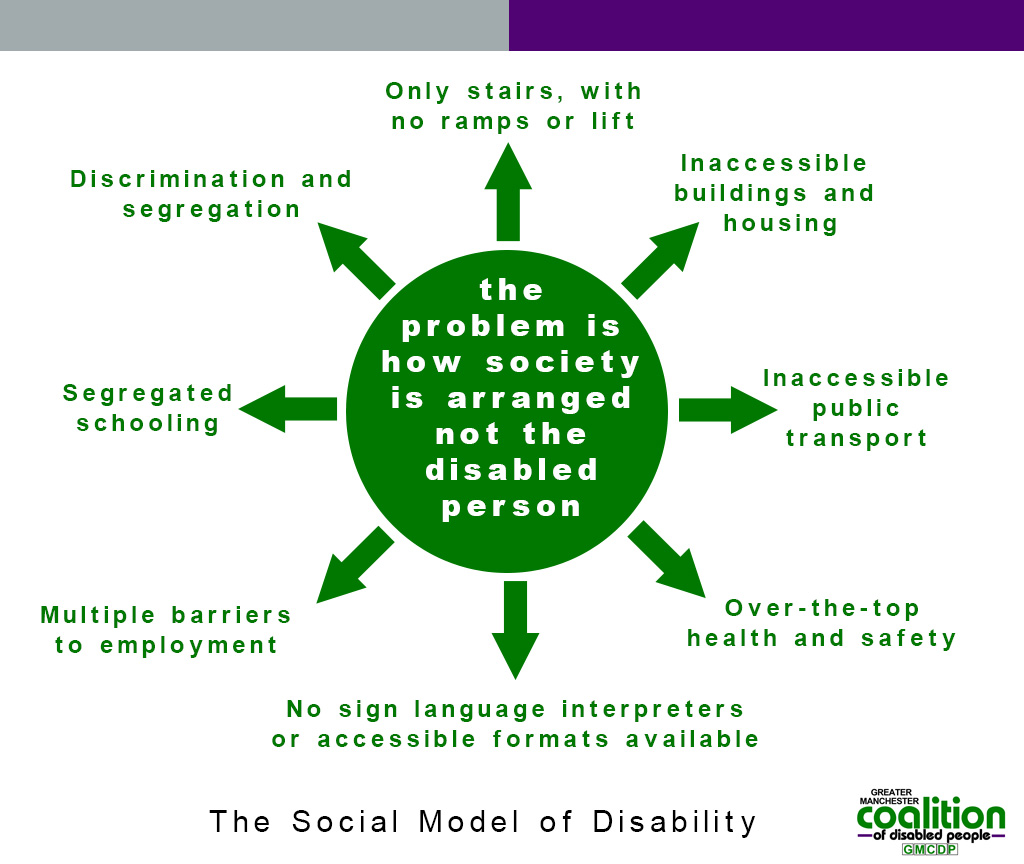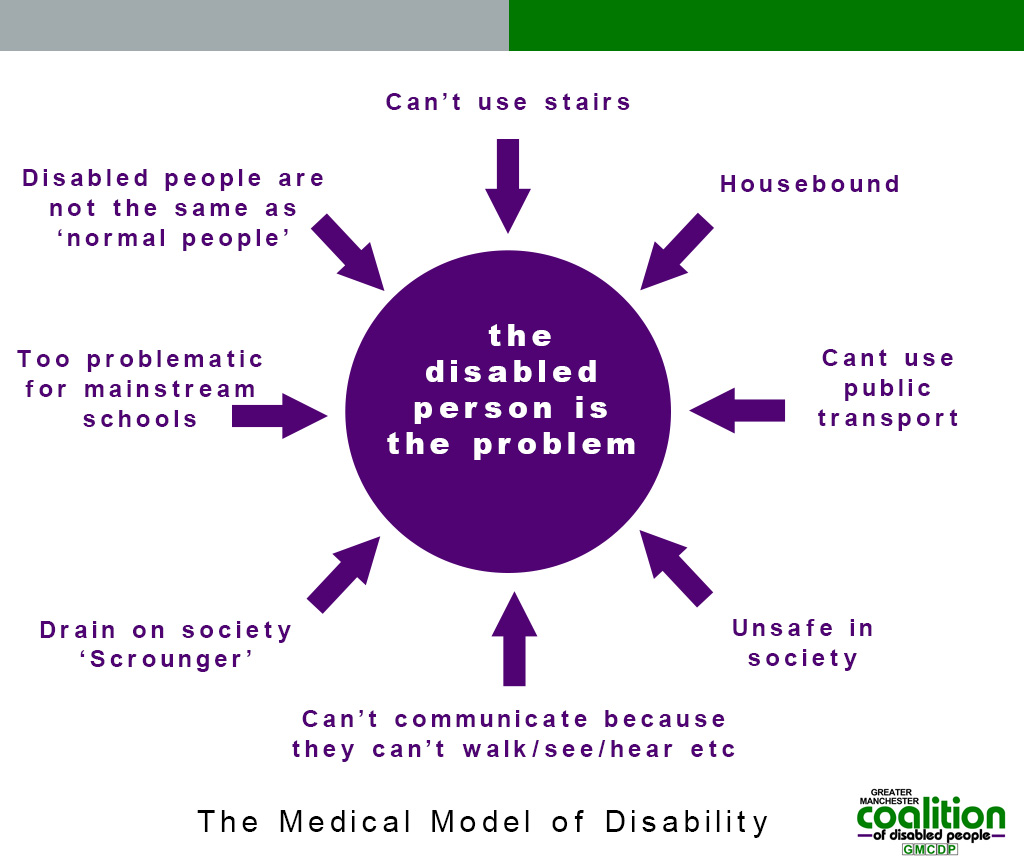The Social Model of Disability
The Social Model of Disability identifies the way society is organised and the barriers it puts in place for disabled people as the problem, rather than the individual’s impairment or difference. These barriers can take the following forms:
-
Organisational barriers:
This is where the way things are set up in society causes barriers and problems for disabled people. For example, in one hospital it may be that an audiology (hearing) department only allowing appointments to be booked over the phone, yet an optometry (sight) department sends letters to patients, but only in standard print. By having inaccessible systems in place, everyday tasks which everyone has (such as arranging appointments) become more difficult for disabled people.
-
Physical barriers:
This is where things have been built in a society which is inaccessible. For example, buildings with steps without either a ramp or lift. This can also be buildings where the ground floor is accessible, but the rest of the building is not. This prevents disabled people from being able to freely access buildings in our communities and society.
-
Attitudinal barriers:
This is where people can have negative attitudes towards disabled people. For example, this could be low expectations of disabled people’s ability or intelligence, discriminatory attitudes, bullying or a lack of respect and unequal treatment. For example, some people will speak to a disabled person’s PA/person they are with, rather than talk directly to the disabled person. These kinds of attitudes cause a discriminatory environment for disabled people.

The Social Model states that society is responsible for removing the barriers disabled people face, in order to enable disabled people to be an equal, included and valued part of society.
Impairment and Disability:
Under the Social Model, impairment and disability are not the same:
Impairment
is when part of a person’s body, mind and/or emotions works
differently to what is considered ‘normal’ by society.
Disability
is the barriers, discrimination and prejudice disabled people
face. It is not our bodies or minds which ‘disable’ us, it is society.
The Medical Model of Disability
The Medical Model of Disability views disability differently, as it focuses on the individual’s disability/condition and identifies this as being what will disable them, causing clear disadvantages and a reduction in quality of life. The medical model is problematic and unhelpful for many reasons, not least because creates a basis for social degradation of disabled people; it also causes an almost exclusive focus on “solutions and cures”, rather than adapting existing structures to enable inclusion and access. The medical model of disability also often portrays disabled people negatively by promoting a largely disempowered image of disabled people, who are only impacted by their own “condition”, rather than identifying disability as a social, political, economic and geographical issue.

The Social Model and the Medical Model in action:
The following two examples highlight the differences between the social model and the medical model, and how they impact on disabled people.
Example a) A child with a hearing impairment wants to watch the new superhero film which has just come out with his friends.
Social Model:
Under the social model, there are regular screenings which include subtitles. The child can, therefore, join in with his friends and enjoy a trip to the cinema.
Medical Model:
Under the medical model, there isn’t a solution for this child, and he will likely miss out on the experience altogether. Experiences like these lead to separation and isolation from mainstream events and opportunities and prevent young disabled people from being able to enjoy cultural activities alongside their peers.
Example b) A young disabled person is applying to Universities.
Social Model:
Under the social model, they will be able to apply for Universities using the same criteria as other students (things such as the quality of the course, location preference or nightlife/leisure activities available). With the social model in place, they will feel secure that the buildings and environment will be accessible, and they will receive the support they need. This, therefore, puts them in the same position as their non-disabled peers, and gives them the same choices and opportunities in life.
Medical Model:
When looking for which University to apply for under the medical model, however, the young person will have to consider many other things first, before even thinking about the usual concerns of prospective students. Some of these include: what support will be available at each university; what universities have the best accessible buildings and accommodation; and which area which has the most (if any) accessible transport and leisure activities.
This example demonstrates how quickly disabled people are excluded from opportunities, and how much extra thought, research and preparation disabled people have to factor in for decisions in their lives, which their non-disabled peers do not have to consider. This is not limited to further education, but in all areas of life, including small everday decisions, as well as larger decisions about the kind of life we want to lead.
Tl:Dr?
The takeaway message of the Social Model of Disability is that disabled people are disabled by society and not by our impairments.